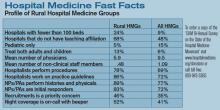Capacity Building Via Continuum of Training Options
SHM has designed a range of technical support and training options to meet the needs of member institutions aiming to implement and sustain the transitions bundle. Strategies include:
- A Web-based resource room for care transitions in older adults: The transitions bundle, field guide, and related interventional materials will be freely available in the SHM online resource room.
- A Quality Pre-Course for QI Teams: The course is scheduled for 2008 and 2009 SHM Annual Meetings.
- A Transition Planning Mentored Implementation Program (TPMI): This yearlong mentoring program will support sites as they implement and evaluate transitions bundle interventions. The program includes a training conference, monthly teleconferences with expert mentors and peer support mechanisms.
- A consultation service: This will provide on-site consultation and technical assistance to sites planning, implementing, and evaluating discharge interventions. The service includes site visit, follow-up report of findings, recommendations and resources, and post-visit follow-up to review progress, successes and unforeseen barriers.
These support mechanisms are intended to assist those who lead improvement teams at their institutions. Enrollment will begin in the fall. For more information, contact [email protected].
A Seat at the Table
SHM active in shaping new performance standards
By Jane Jerrard
Healthcare providers are in the midst of important changes in how they work and how they’re rewarded for that work. Recent initiatives including Medicare’s Physician Quality Reporting Initiative and a Medicare hospital value-based purchasing program mandated by the Deficit Reduction Act spell change for practitioners, including hospitalists.
SHM is working to add a hospitalist voice to discussions and decisions that shape these initiatives. By participating in organizations such as the American Medical Association’s (AMA) Physician consortium for Performance Improvement (PCPI), SHM has a seat at the table where decisions are made.
How Participation Works
The PCPI was convened in 2001 by the AMA, with the mission of physician-led performance improvement. While the primary focus is on improving quality, the Consortium’s performance measures are ultimately those used in CMS and other pay-for-performance (P4P) programs and value-based purchasing initiatives.
SHM didn’t get involved when the PCPI was first formed because the issues weren’t relevant to hospitalists. “SHM was invited to participate at that time, but the focus was really on outpatient care,” says Patrick J. Torcson, MD, MMM, FACP, director of hospital medicine at St. Tammany Parish Hospital in Covington, La. “More recently, when the PCPI began looking at the relation between hospital-level measures and physician-level measures, SHM CEO Larry Wellikson said we need to get involved.”
Dr. Torcson is SHM’s representative on the consortium. “For the last year and a half, I’ve been attending the PCPI meetings to represent SHM and have been involved in various PCPI work groups,” he says. “I had previously served on the SHM HQPS [Healthcare Quality and Patient Safety Task Force] and now serve on the PPC [Public Policy Committee], and I think the SHM leadership thought that combination of interests would be good for a PCPI representative.”
What about the Work Groups?
Work groups within the PCPI are assigned specific areas. These groups are responsible for creating performance measures within an area, which are then reviewed by the entire consortium.
“I participated on a work group to develop performance measures for emergency medicine physicians,” says Dr. Torcson. “This group thought that the current disease-specific measures weren’t relevant for them, and that the current hospital measures were also not relevant. I provided a hospitalist’s perspective on hand-offs and discharge which was really focused on a process of care that begins in the ED [emergency department].”
